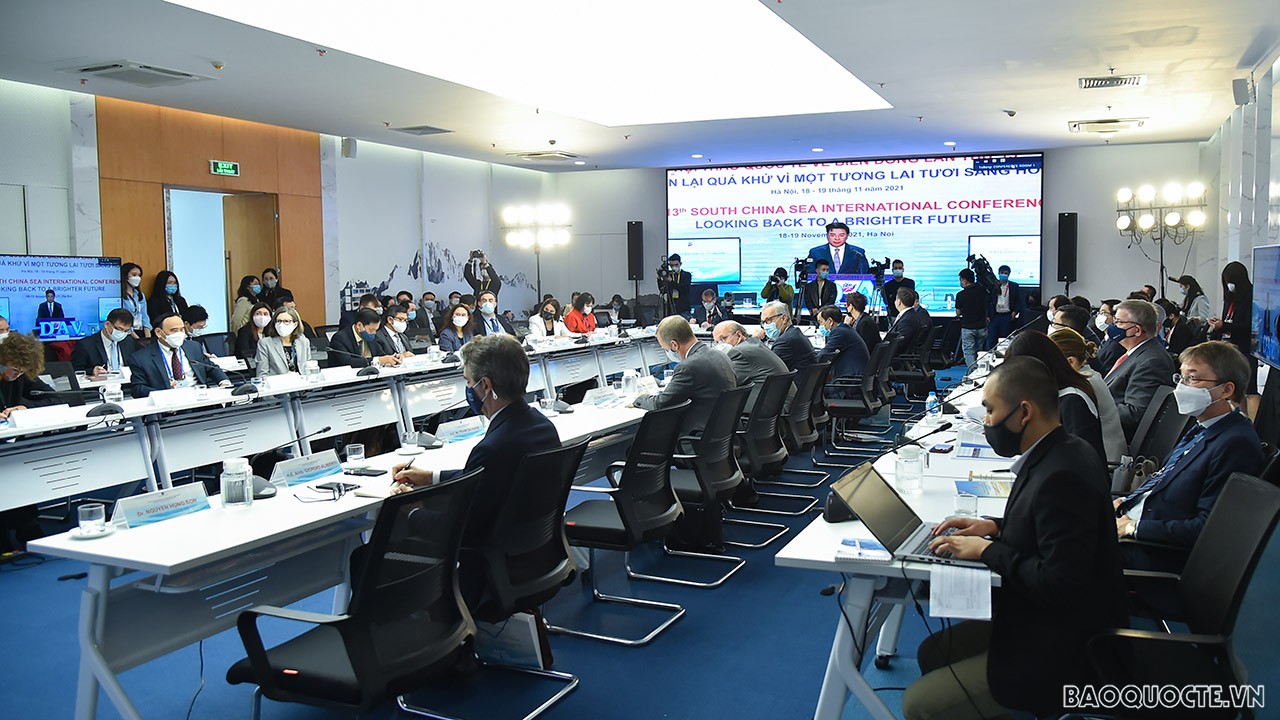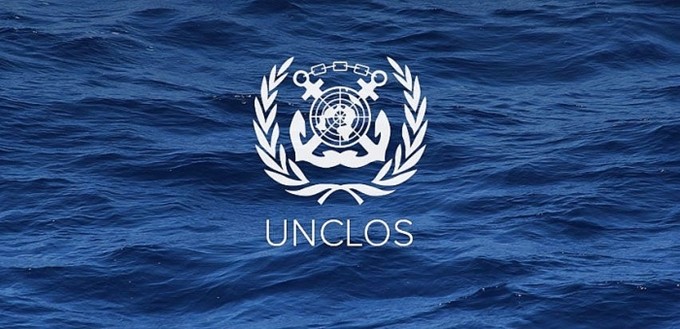
The South China Sea: A year looking back
Latest
 |
| The opening session of the International Conference on the East Sea "Looking back at the past for a brighter future", on November 18, 2021 in Ha Noi. (Photo: Tuan Anh) |
The expansion in scope and frequency of unilateral actions has caused great concerns and eroded trust amongst involved parties. Such actions include abuses of jurisdiction by law enforcement, deployment of massive fleets of armed fishing vessels to change the status quo while interfering with other coastal states’ exploration, extraction, and management of resources, to name just a few.
The high-density and large-scale presence of naval forces, especially the sudden increase in maritime & air exercises, not only is a manifestation of military power competition but also involves potential risks and errors that could lead to confrontation.
Most alarmingly, the surge in naval and air exercises conducted by major powers are raising the concern of arms race and militarization, which may turn the region into not only an arena for sabre rattling among major countries but also the world’s potential flashpoint.
The tendency to cooperate
Yet, besides tension, there are signs for improvements in regional cooperation. After 14 years of interruption, Viet Nam and the Philippines have resumed their joint marine scientific research agreement. Malaysia and Brunei reached an agreement on joint development in Commercial Arrangement Area. In the region, many forums have been held to discuss maritime cooperation across many areas, including protecting environment, combating climate change, restoring sea connectivity, and developing the blue economy.
On the political and diplomatic fronts, despite the unilateral statements that complicate disputes, 2021 has also witnessed positive moves both inside and outside the region. Countries and organisations with vested interests such as the EU, UK, France, the Netherlands, and India have all announced their respective Indo-Pacific strategies, stressing their commitment to maintaining stability, including through a consistent presence in the South China Sea to strengthen a maritime order based on international law.
ASEAN and ASEAN-led fora have found a common voice in stating concerns over developments on the ground, and championing the unifying and universal role of UNCLOS in establishing maritime claims, calling on all parties to cooperate in trust-building, and stressing the necessity of implementing the Declaration on Code of Conduct in the South China Sea (DOC) and advancing the negotiation of a Code of Conduct in the South China Sea (COC).
ASEAN has also succeeded in issuing the Declaration on the Blue Economy and enhancing cooperation among member countries in many areas such as maritime transport connectivity, marine environmental protection, marine waste, and maritime security and safety. Quite remarkably, after a period of interruption due to COVID-19, the negotiation of a Code of Conduct (COC) has been resumed with the common goal of working towards a set of practical and effective rules.
On the legal front, the year saw many domestic law documents issued with ambiguous scope of regulation and application, granting authority beyond the jurisdiction of law enforcement agencies, especially for the use of force to suppress activities at sea. Such permission has raised concerns about the use of force to support and expand illegal maritime claims.
Nevertheless, 2021 continues to witness the continued mentions of the South China Sea at the United Nations, a trend starting back in 2020. Japan and New Zealand have sent notes-verbale to the United Nations Commission on the Limits of the Continental Shelf (CLCS) expressing a number of legal positions on the South China Sea.
Japan rejected the application of the straight baseline method to the Spratly Islands and affirmed the importance of the South China Sea Arbitration Award in ensuring the maintenance of freedom of navigation and overflight in the South China Sea.
Meanwhile, New Zealand affirmed the value of UNCLOS as the sole legal basis for maritime claims, rejected the so-called historic rights and the application of a straight baseline to the Spratly Islands, opposed the sovereignty and maritime claims over submerged features, and reaffirmed the binding value of the South China Sea Arbitration Award to the parties involved.
Following the US, Australia, UK, Germany, and France, these statements continue to be the voices of the international community in expressing clear legal positions, upholding the universal value of UNCLOS, and recognising the legal value of the South China Sea Arbitration Award.
In the field of information, the application of remote sensor technology has opened up the possibility for transparency of developments in the field, making it easier for the international community to perceive activities taking place in maritime domain.
However, remote sensing technology can also be exploited and manipulated according to the subjective will of human actors. In addition, the integration of illegal claims into scientific publications and professional undertakings by certain organizations still persists, further complicating and politicizing research activities.
 |
| The statements continue to be the voices of the international community in expressing clear legal positions, upholding the universal value of UNCLOS, and recognising the legal value of the South China Sea Arbitration Award. (Photo: UN) |
Multidimensional Information
However, a silver lining in the field of communications is that there are more and more open academic fora for the disclosure of information and unbiased research, thereby creating a multidimensional and verifiable information system that helps in increasing transparency and minimising the domination over and distortion of information on the South China Sea. The participation of non-traditional information channels on social media has also contributed to the rapid and uninterrupted flow of information with greater coverage, consequently contributing to increasing global awareness by the academic and international community interested in the South China Sea issue.
The interweaving shades of light and dark in the South China Sea picture show that there exist potentials for conflicts to erupt at any time despite the absence of major conflict. In an emerging strategic space with many newly formed security structures and groupings intertwined on a broader scale in the Indo-Pacific, the South China Sea is the centerpiece for intense great power competition. It is also the testing ground for the formation of a new international order at sea.
Which shall prevail and become the mainstream in the new order at sea, the tendency of militarisation and hegemony or the trend of freedom, openness, and respect for the interests of small and medium-sized countries based on international law? The answers will depend on not only the roles and responsibilities of great countries, but also the joint efforts of small and medium countries, especially countries in the region such as Viet Nam.









